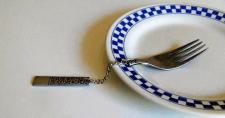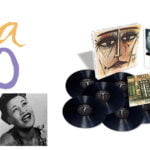It’s the time of year for saving money!
When I was a lad, reviewing audio gear was much easier than today. If you needed to boost your street cred there were always plenty of mediocre or the occasional downright bad piece of gear that could be damned unmercifully. But nowadays, sheesh…even the vast majority of $299 turntables deliver on their sonic promises. And digital? On current generation of smart phones, let alone the next gen, you can achieve fidelity levels that equal some dedicated players. And earphones? I regularly listen to $14/pair KZ in-ears that sound more than decent. And yes, a pair of $1700 Earsonics EM6-S are better in every way, but the difference isn’t nearly as Olympian between entry-level-good and state-of-the-art-great as it was when I began writing about audio.
 The worst you can really say about many new components nowadays is that they are “overpriced.” But this “damning” criticism is easily abused, such as when a moron commenting from Disqus claimed that a $349 in-ear I reviewed recently was “a rip-off” because it only had “$2 in parts.” How he knew this, other than spirit messages leaking through his tin hat, is a mystery. But he was so convinced that he was right, that no amount of logic or even common sense could penetrate his belief system. But the hobby of audio has always had its share of pernicious audio cranks…
The worst you can really say about many new components nowadays is that they are “overpriced.” But this “damning” criticism is easily abused, such as when a moron commenting from Disqus claimed that a $349 in-ear I reviewed recently was “a rip-off” because it only had “$2 in parts.” How he knew this, other than spirit messages leaking through his tin hat, is a mystery. But he was so convinced that he was right, that no amount of logic or even common sense could penetrate his belief system. But the hobby of audio has always had its share of pernicious audio cranks…
The most malignant aspects of most modern audio devices I’ve seen recently are usually ergonomic or perhaps the features or navigation system are primitive or limited compared to the latest IOS or Android-connected unit. But Bad? Well, there was one portable player that I bricked last month by updating a streaming player app, but it was a Beta OS…
 Lately I’ve seen more issues with software and apps than I do with hardware and components. I reviewed the MUZO Cobblestone streaming device (which has a MSRP of $69) about six months ago and have been happily using it ever since but after the latest series of IOS updates to my iPhone SE the MUZO app on my phone has been unable to re-link with my Tidal account. After trying for a couple of days I pulled the Cobblestone out of my bedroom system and replaced it with a four-year-old Sonos Connect, which as in the past, worked perfectly.
Lately I’ve seen more issues with software and apps than I do with hardware and components. I reviewed the MUZO Cobblestone streaming device (which has a MSRP of $69) about six months ago and have been happily using it ever since but after the latest series of IOS updates to my iPhone SE the MUZO app on my phone has been unable to re-link with my Tidal account. After trying for a couple of days I pulled the Cobblestone out of my bedroom system and replaced it with a four-year-old Sonos Connect, which as in the past, worked perfectly.
When I think back through the products I’ve reviewed over the years, I can only conclude that we do live in the ‘Golden Age” as far as the quality and diversity of audio products available. You can buy new gear or you can delve into the vast used and vintage market. Regardless of when a component was made, if it was sold in any numbers and repairable, chances are if you search the Internet you can find the parts to repair it (if you have the skills) or a restored and repaired example offered for sale.
 Among my oldest components are some Bryston Powerpack 120 Power amplifiers that are more than 20 years old. I can still mate them with almost any preamp/DAC/streamer that comes in the door (as long as it has variable level line outputs). Do they sound as sublime as the newest reference power amplifier in my system, the Pass 150.8? No, but they’ve still delivered a great deal of value over the past two decades. That is, in my opinion, worth something.
Among my oldest components are some Bryston Powerpack 120 Power amplifiers that are more than 20 years old. I can still mate them with almost any preamp/DAC/streamer that comes in the door (as long as it has variable level line outputs). Do they sound as sublime as the newest reference power amplifier in my system, the Pass 150.8? No, but they’ve still delivered a great deal of value over the past two decades. That is, in my opinion, worth something.
It must be disheartening to be a negativistic audiophile in an age when there are very few products that you can thoroughly lambaste (MQA is the current “sour grapes” fave). Since I’ve always been a value-oriented high-performance audiophile I’m delighted that there are so many high-value audio products for consumers to choose from. And if that means there are fewer products that I can use to hone my reputation as a “tough critic” so be it. I consider that a win…








